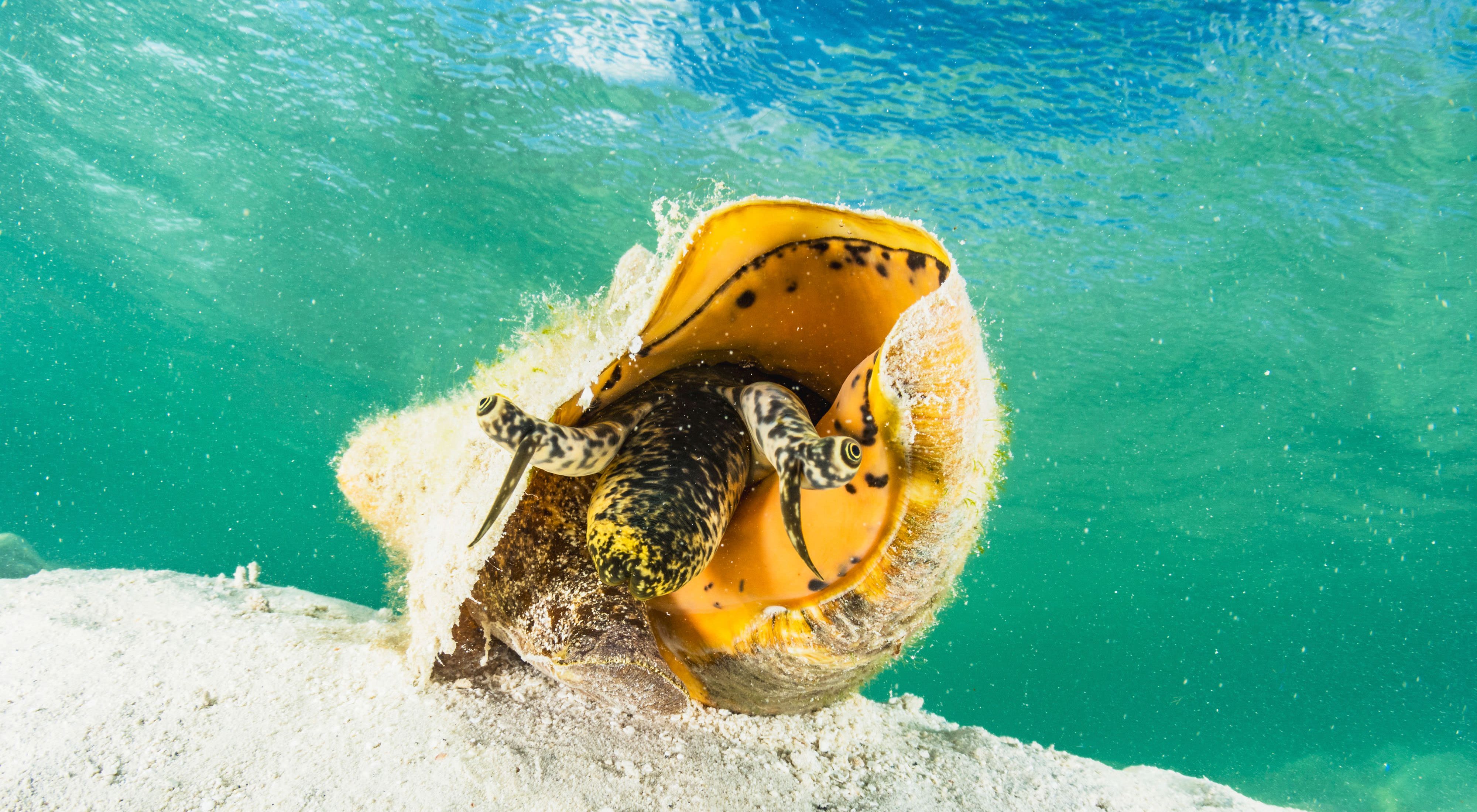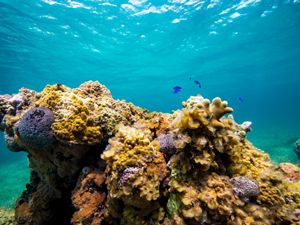Protecting the Bahamian Queen Conch
By exchanging knowledge and insights, scientists and fishers are working toward a sustainable future for this vital fishery.

Why Does Conch Maturity Matter?
Bahamian queen conch populations have drastically deteriorated due to unregulated and illegal fishing, including poaching. As with most marine species, it is important to leave juveniles in the ocean so they have time to reproduce and propagate the species.
In a lab, scientists are able to observe conch reproductive tissue to determine sexual maturity. However, lip thickness is an indicator of maturity that fishers can use while on the water. If they observe that the lip is too thin (less than 15mm), they know the conch may not yet be sexually mature and should be returned to the ocean.
Sustainability Requires Science and On-the-Ground Perspectives
Did you know the thickness of a queen conch’s lip can indicate whether it is mature enough to reproduce? During an outreach expedition across multiple islands in The Bahamas, TNC scientists taught fishers key indicators, like lip thickness, to determine if a conch should be harvested or left in the water. This knowledge will help fishers play a significant role in making the queen conch fishery more sustainable.
This fishery, which generates over $7 million per year, is vital for Bahamian economies and helps support thousands of households throughout the country. Bahamian fishing communities have for some time expressed interest in doing their part to help ensure this important species has a sustainable future. TNC created this outreach expedition to connect directly with fishers on the ground and build trust with them by exchanging knowledge.
During the expedition, scientists and marine conservation experts from TNC’s Bahamas and Belize programs taught fishers about the biology of conch maturity and the methods that can be used—both in a lab and on the water—to determine if a conch is mature. Fishers took part in the entire conch maturity sampling process, including weighing, measuring, studying reproductive tissue and recording data. As part of this reciprocal learning opportunity, fishers shared their experiences of working with conch almost daily and relying on the species to support their families.
To help fishers understand more of the science behind fishery reform, they have been asked to participate in TNC’s FishPath engagement process, which offers decision support for management of data-deficient fisheries. In fact, the FishPath process helped identify the need to engage fishers in conch maturity research by revealing that there was not a good understanding of how to determine sexual maturity—a necessary part of adhering to sustainable practices on the water.
By sharing the science behind fishery sustainability and gathering valuable insights from those that depend on queen conch for their way of life, TNC will continue to actively involve Bahamian fishers in efforts to safeguard this critical species and their livelihoods into the future.


